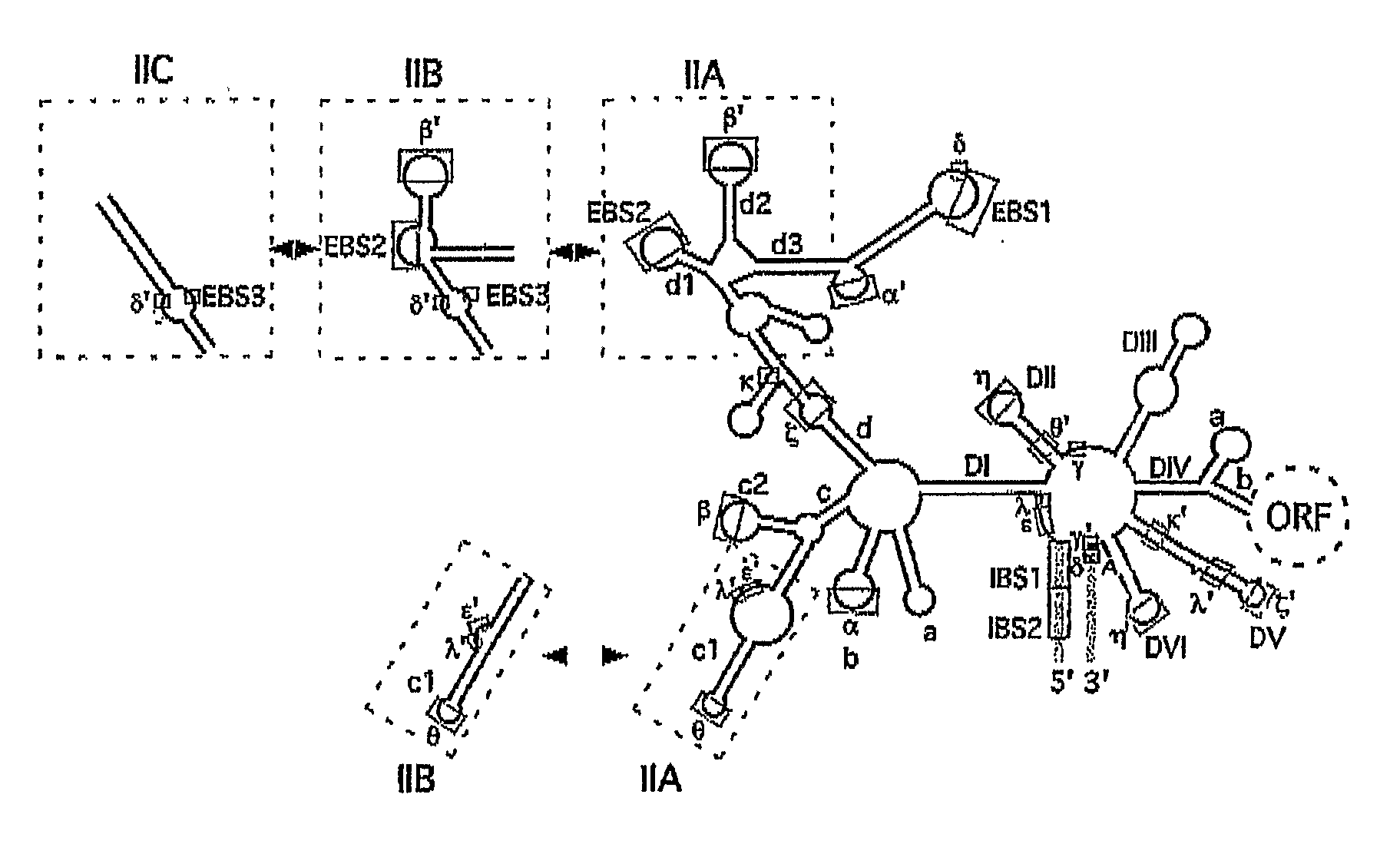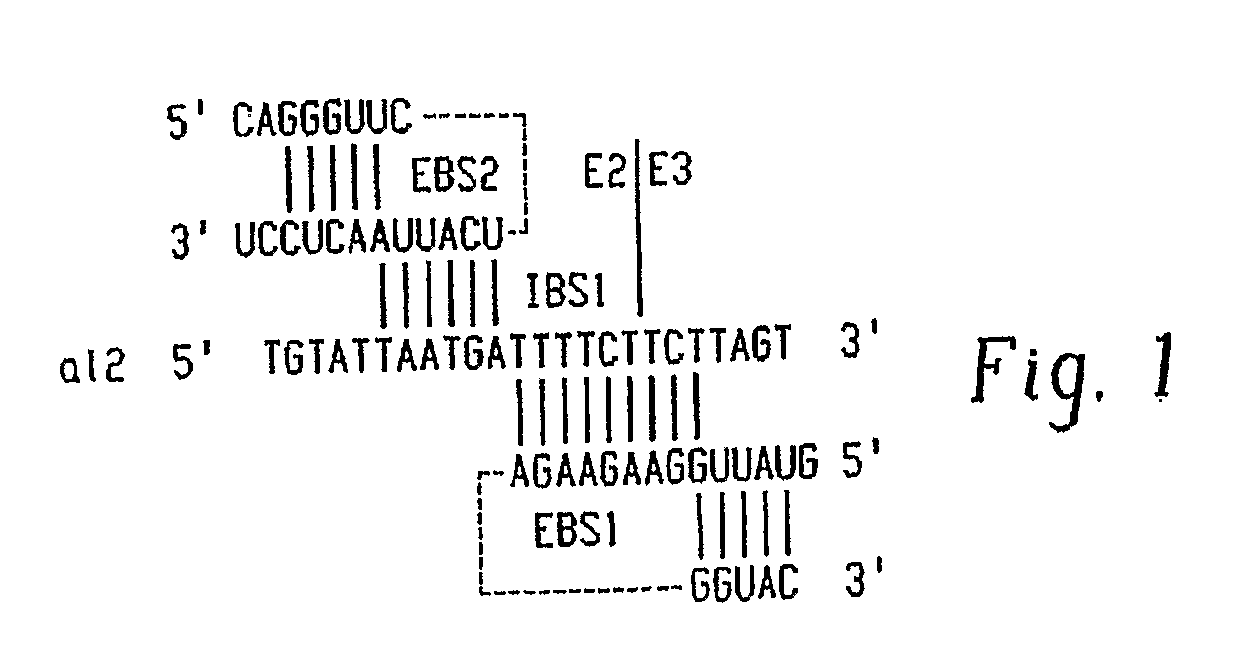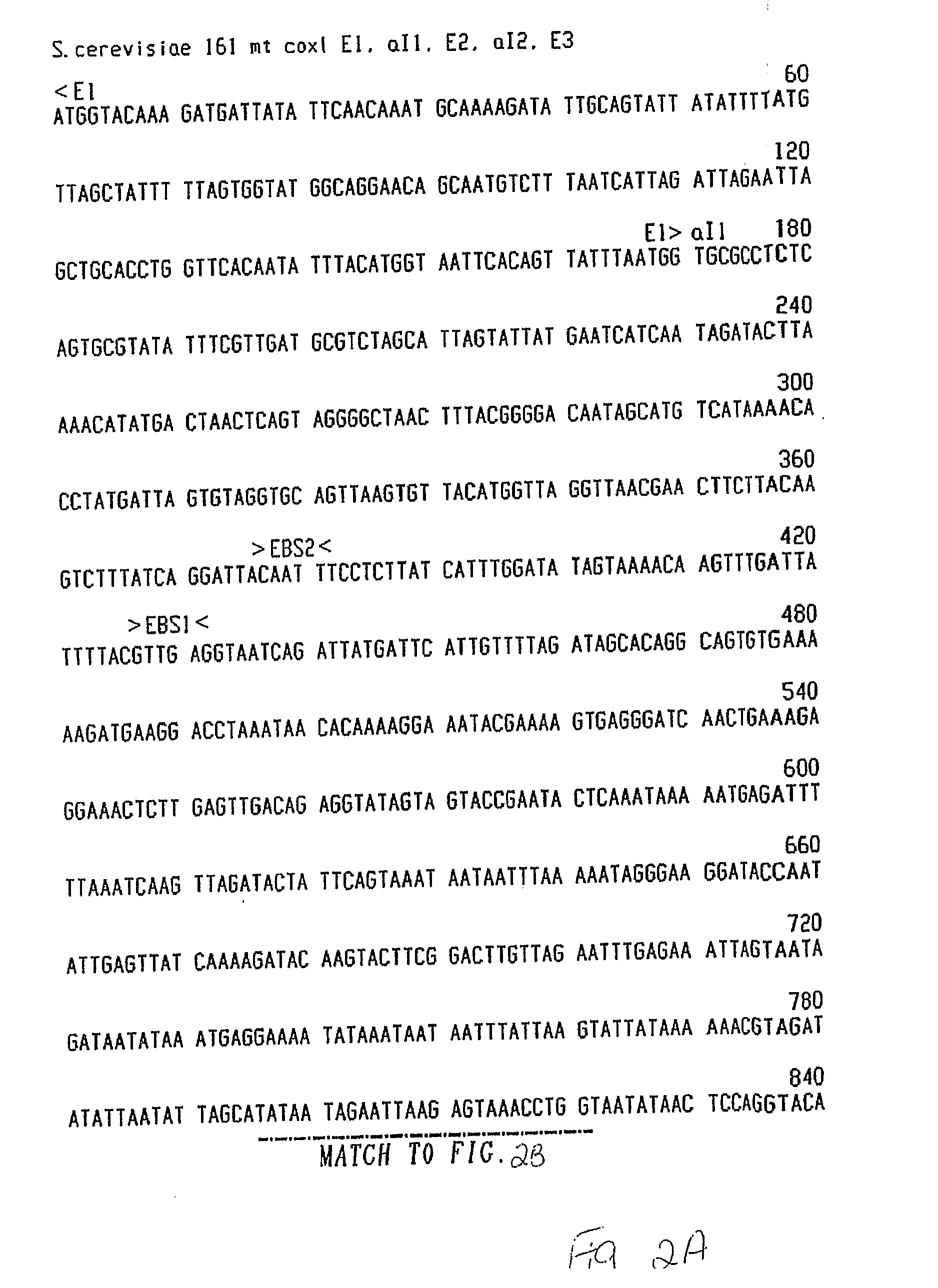Gene Targeting in Eukaryotic Cells by Group II Intron Ribonucleoprotein Particles
- Summary
- Abstract
- Description
- Claims
- Application Information
AI Technical Summary
Benefits of technology
Problems solved by technology
Method used
Image
Examples
example 1
Modification of DNA Substrates In Xenopus laevis
Materials and Methods
[0067] Recombinant plasmids. pACD2 and pACD3 are intron-donor plasmids used for bacterial gene targeting (Guo, H., Karberg, M., Long, M., Jones, J. P. 3rd, Sullenger, B., Lambowitz, A. M. (2000) Group II introns designed to insert into therapeutically relevant DNA target sites in human cells. Science. 289, 452-457; Karberg, M., Guo, H., Zhong, J., Coon, R., Perutka, J., and Lambowitz, A. M. (2001) Group II introns as controllable gene targeting vectors for genetic manipulation of bacteria. Nat. Biotechnol. 19, 1162-1167). They contain a 0.9-kb L1.LtrB-ΔORF intron and flanking exons cloned downstream of a T7lac promoter in the vector pACYC184, which carries a capR gene. In both plasmids, the LtrA ORF is cloned just downstream of the 3′ exon; in pACD2, the L1.LtrB-ΔORF intron contains a phage T7 promoter inserted in intron DIV for use in intron mobility assays. The recipient plasmid pBRR3-ltrB contains the L1.LtrB ...
example 2
RNP Injection into Zebrafish Embryo
[0086] In vitro fertilization of embryos was performed according to protocols described in The Zebrafish Book (Westerfield, M. (1989) The zebrafish book; A guide for the laboratory use of zebrafish (Brachydanio rerio). University of Oregon Press, Eugene, Oreg.). Approximately 0.5 mL of water was added to the sperm / egg mixture to allow fertilization to begin. Fertilized embryos were allowed to develop for approximately 15 minutes before injection.
[0087] The injection procedure was based on methods described in Zebrafish: A Practical Approach (Nusslein-Volhard, C. and Dahm, R. (2002) Zebrafish: A Practical Approach. Oxford. Universit. Press, Oxford). Borosilicate capillaries were pulled using a needle puller to prepare microinjection needles. The tip of the needle was cut to produce an open-ended point with a bore of approximately 10-15 μm. A needle was back-loaded with 2 μL of solution containing the RNP and phenol red tracer dye. A separate needl...
example 3
RNP Injection into Drosophila melanogaster Embryos
[0089] Mating cages were set up containing several male and female white 1118 flies. Female flies deposited fertilized embryos in the agar plates. The embryos were extracted from the agar and washed with sterile, distilled water. The embryos were manually dechorionated and placed on a slide to be transferred to a dessication chamber for approximately 5 minutes. Following dessication, the embryos were covered with oil. The fertilized embryos remained on the slide for injection.
[0090] The injection procedure was based on methods previously described, however the injection was manually controlled using a 50 mL syringe. Borosilicate capillaries were pulled using a needle puller to prepare microinjection needles. The tip of the needle was cut to produce an open-ended point with a bore of approximately 7-10 μm. A needle was back-loaded with 2 μL of solution containing the RNP. A separate needle was back-loaded with target DNA solution. T...
PUM
| Property | Measurement | Unit |
|---|---|---|
| Molar density | aaaaa | aaaaa |
| Molar density | aaaaa | aaaaa |
| Fraction | aaaaa | aaaaa |
Abstract
Description
Claims
Application Information
 Login to View More
Login to View More - R&D
- Intellectual Property
- Life Sciences
- Materials
- Tech Scout
- Unparalleled Data Quality
- Higher Quality Content
- 60% Fewer Hallucinations
Browse by: Latest US Patents, China's latest patents, Technical Efficacy Thesaurus, Application Domain, Technology Topic, Popular Technical Reports.
© 2025 PatSnap. All rights reserved.Legal|Privacy policy|Modern Slavery Act Transparency Statement|Sitemap|About US| Contact US: help@patsnap.com



